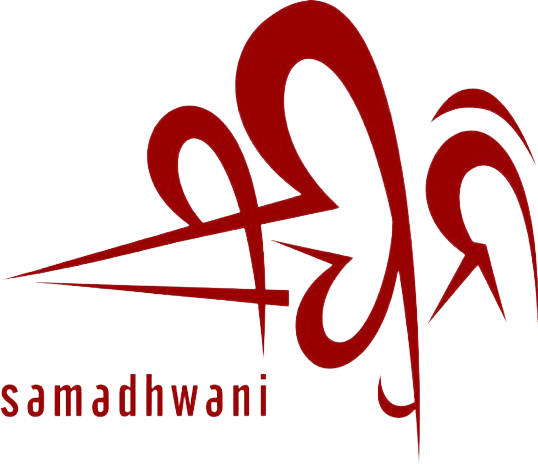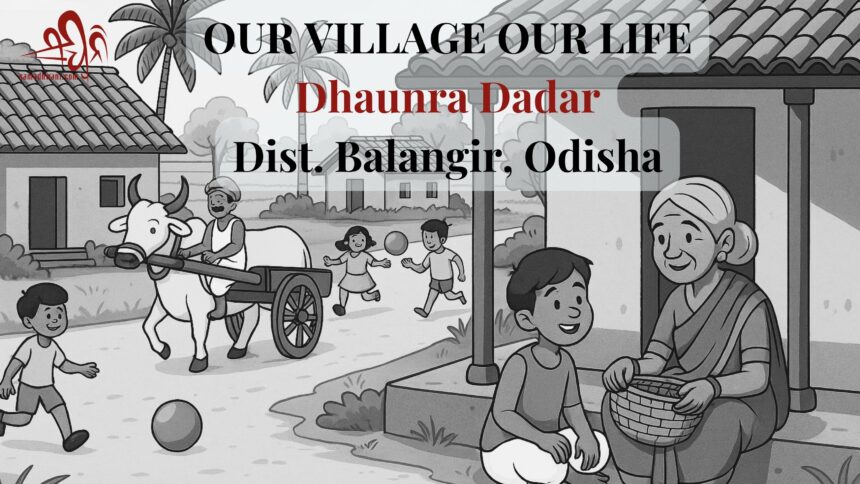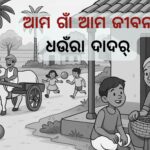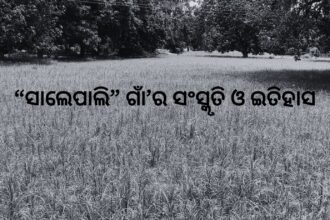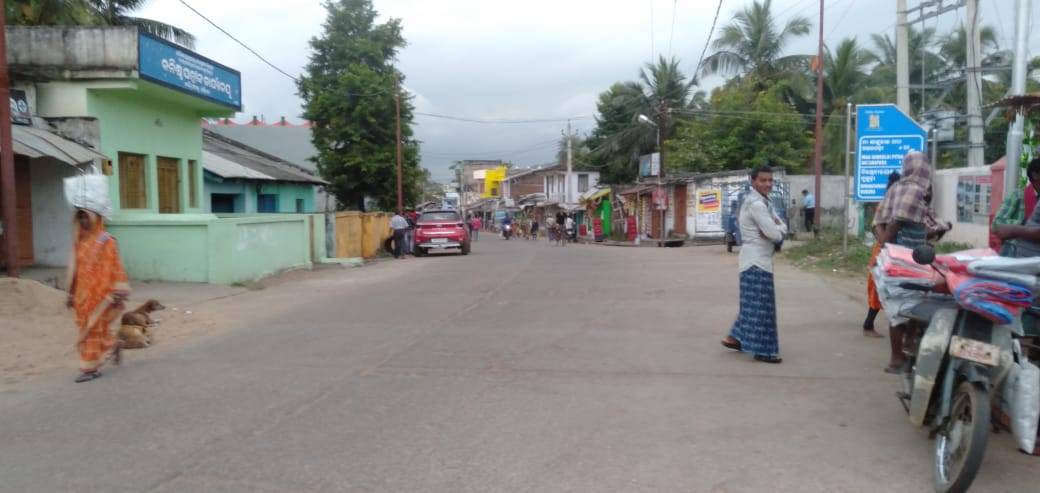In 2023, during our visit to Paikmal block in Bargarh district, we set out to guide students in documenting the history and culture of their own villages. Along the way, we connected with many young minds from different schools, each carrying a unique story. One such school was Padampur Government Girls High School (SSD), nestled on the route between Padampur and Paikmal. Most of the girls there stay in the school hostel, far from their native villages. While they endure the pain of separation, their deep love for home is unmistakable. This longing often finds its way into their writing, giving their stories an emotional depth that sets them apart. Among the 400 students we interacted with, one name stayed with us, Jhili Bariha. A Class 8 student, Jhili, belongs to Dhaura Dadar, a remote tribal village in Patnagarh block of Balangir district. Her father, Nandi Bariha, and mother, Manjari Bariha, come from a modest tribal background. Jhili excitedly agreed to participate in the “Ama Gaan Ama Jiban” program after knowing about it. She stayed the entire year in the hostel before finding time to go to her village during the summer holiday. She wrote a simple, honest, and emotional story of her village, surrounded by the sights and sounds of home. We now look forward to getting back in contact with Jhili and her fellow students after she finishes her Class 10 examinations. With a little more guidance and conversation, she is certain to discover and preserve even more of the history of her village. – Editor (Swayamprava Parhi)
My Village – Jhili Bariha
My name is Jhili Bariha. My village name is Dhaura Dadar. In our village, there are many streams and waterfalls. That’s why our village is called “Jharani Pani”. Our village was settled long ago. People like Teli, Gour, Kandha, Adivasi, and Harijan were the first ones to live here. Before, our village environment was very beautiful. It was full of green fields and crops. Wherever you look, everything looks fresh and nice. Now, many forests are being cut down. So the environment is not as beautiful as before. Earlier, the weather was also good, but now it has changed. Before, people used to live together with love. Now nobody mixes with anyone. Before, there were many trees and plants, so the village used to feel nice.
In our village, we celebrate many festivals. Like Dashahara Puja, Nuakhai, Diwali, Laxmi Puja, Shivratri, Janmashtami, Naam Yagya, Saraswati Puja, Kartika Purnima, Ram Navami, Ganesh Puja, Holi and many more. But now, it doesn’t feel the same. People are always busy with their own work. Because of mobile phones, people don’t talk to each other. They don’t even come out of their homes. Everyone is busy watching TV and their phone. Nobody speaks to others.
Before, people used to stay united. All the boys and girls used to play together. We all used to have fun. We used to celebrate festivals together, like a big family. People were really good before.
In our village, there are around 600 or more people. There are 107 houses now in the village. The most beautiful house in our village is our Mukhia’s (village head’s) house. It is really very nice. He helps people when there is a problem in the village. If someone is in trouble, he tries to solve it. The smallest house in our village is Ram’s house. It is very small. Ram always works hard. Whatever money he earns, he runs the house with that only.
In our village, people from different communities like Teli, Gour, and Kandha live together. The people in our village have very good relations with each other. We all celebrate festivals like Holi and Makar Sankranti together, happily. In our village, people also do craft work like carpentry and making jhotichita (traditional wall art). We have two schools and one Anganwadi centre in our village. Around 150 children are studying in the schools. Before, people used to drink water from wells. It was very hard. They had to work a lot to bring water. Now, we have tube wells, hand pumps, and deep bore wells in the village. Near our village, there is a big forest. People collect firewood, mahua flowers, jamukoli, kusum and other forest items from there. But our villagers don’t want to cut trees. They want to go ahead in life without harming the forest. That’s why now many trees are still there. In our village, children play cricket, bati, and football. They play in the village playground. The girls in our village also study well. They want to move ahead in life and work hard in their studies.
Before, in our village, people used to grow wheat, bajra, maize, paddy, mung, mandia, kodo, mustard, cotton, and many other crops. Now, all these crops are not found in our village anymore. These days, people mostly grow tomato, brinjal, chilli, cotton, paddy, mung, and maize, biri, jhunga (ridge gourd), and kolatha (horse gram). But now Kolatha has not grown anymore.
My grandfather and grandmother told us that during their childhood, they used to eat mandia, bajara, maize, and gud bhaat (jaggery rice). People still eat some of these things now, but mandia and bajra are not eaten much these days. Now the village children like to eat chaumins, manchurian, gupchup, kurkure, chaat, burgers, and all these kinds of food. During festivals in our village, many kinds of food are cooked. We make rice, dal, khiri, sabzi, and other dishes. Especially in the Nuakhai festival, we make a lot of Abuda Pitha, which is cooked in most homes. In our everyday food, we eat rice, dal, vegetables, soyabean curry, potato curry, egg, fish, chicken, aloo bhaja, cabbage curry, cauliflower curry, spinach curry, aloo chana curry, fried pointed gourd, fried beans, fried ridge gourd, and many other vegetable fries.
In our village, the main problems are water and bad roads. When people in the village face difficulties, they seek help from other villagers. Some people in the village work in the forest. But most of them work in the fields. Many young boys and girls go outside as migrant labourers for work. Some even go out of the state or to other places in the country.
In our village, people mostly suffer from cold, fever, and cough. When they get sick, they go to the hospital. But the hospital is 13 kilometers away from our village. In our village, we can still see trees like mahua, phalsa, kendu, banyan, tamarind, gahara, and banji. Earlier, there used to be trees like jada tree, bandhasala, and kati koili, but now they are no longer seen.
In our village, there are animals like bullocks, oxen, crows, house lizards, dogs, goats, and others. I love my village very much. I like all the old stories about our village. When someone says something bad about my family, I feel very hurt. I always keep thinking about my village. I want to take part in all village festivals. If anyone in the village is in trouble, I feel like helping them. I also feel like planting more trees and taking care of them. I love to serve people, and I love reading and studying too.
After learning so much about our village, and after doing some small research, I think a lot about it. I feel very happy and proud of my village. I wish that people in our village never face any hardship. I want everyone to live happily.
I feel it is important that all students should know about their village’s history, culture, and food traditions.
In the future, I have decided that I will work for the development of my village. From now on, I want to keep the village clean and beautiful. I also want to remove all the problems my village faces.
This narrative was originally composed in Odia. The English translation has been prepared with the assistance of AI tools to retain the authenticity and voice of the original.
Here is the link to the original Odia story – https://samadhwani.com/9015
